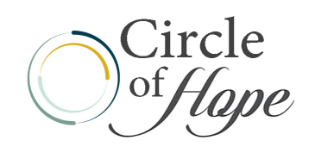
Americans are drinking more when they drink, but only 20 percent of those with an alcohol use disorder seek treatment. For those who’ve had such a diagnosis in the past year, that figure is just under 8 percent.
A June 2015 study shows that 32 million Americans, nearly one in seven adults, have struggled with a severe alcohol problem in the last year. The review discloses that a growing number of Americans have alcohol use disorder (AUD), a relatively new classification which the National Institute on Alcohol Abuse and Alcoholism (NIAAA) defines as “problem drinking that becomes severe.”
Alcohol consumption is the world’s third largest risk factor for disease and disability, is a causal factor in 60 types of diseases and injuries and a component cause in 200 others. Almost 4 percent of all deaths worldwide are attributed to alcohol. Alcohol is also associated with many pressing social issues, including violence, child neglect and abuse and absenteeism in the workplace.
Consequences of Drinking Too Much Alcohol
Excessive and high-risk alcohol use may contribute to violence and result in many adverse health consequences for the consumer. Even moderate drinking can have adverse health effects and lead to alcohol-related motor vehicle crashes and increased injuries. In 2013, alcohol-impaired driving fatalities accounted for 10,076 U.S. deaths (30.8 percent of overall driving fatalities). Current alcohol use in pregnant women is also linked to low birth weight babies, sudden infant death and other developmental delays in children.
Heavy drinking increases the risk for many health and related social consequences. Furthermore, people who drink excessively are at increased risk for alcohol abuse and dependence, liver disease, certain cancers, pancreatitis, heart disease, and death. Also, the more heavily a person drinks, the higher the potential for problems at home, work and with friends.
Binge drinking increases the risk for many health and related social consequences. High-risk alcohol use can lead to injuries, such as falls, fights and suicides, violence, crime rates, motor vehicle crashes, stroke, chronic liver disease, addiction and some types of cancer, such as cancers of the mouth, esophagus, pharynx, larynx, liver, and breast.
Binge Drinking by Women is on the Rise
In 2013, 6.8 percent reported that they engaged in heavy drinking in the past month; 24.6 percent of Americans ages 18 or older said that they engaged in binge drinking in the past month.
Binge drinking (four drinks for women and five drinks for men within about 2 hours) in the United States is on the rise according to an April 2015 study from the University of Washington published in the American Journal of Public Health. The skyrocketing increase of consumption by American women is considered to be the driving force behind the nationwide escalation of binge drinking.
On average, heavy drinking among Americans rose 17.2 percent between 2005 and 2012, mainly due to rising rates among women. Across the nation, binge drinking among women increased more than seven times the rate among men. In Santa Clara County, California, home of Silicon Valley, women’s binge drinking rates rose a whopping 36 percent between 2002 and 2012, compared with 23 percent among men.
Drinking Habits in Youth
In addition to the risks, alcohol consumption carries for adults, developing adolescent brains are especially susceptible to the health risks of alcohol consumption. Adolescents who consume alcohol are more likely to have poor grades and be at risk for experiencing social problems, depression, suicidal thoughts, assault, and violence.
Youth are more likely than adults to binge drink when they consume alcohol. High-risk alcohol use contributes to violence, and motor vehicle crashes and can result in adverse health consequences for the consumer, including injuries and chronic liver disease. Youth who engage in high-risk drinking also are more likely to use drugs and engage in risky and antisocial behaviors.
America’s teenagers are always looking for a new way to get high. One of the latest trends is drinking hand sanitizer for a fast, potent high. A typical eight-ounce container of hand sanitizer gel contains the same alcohol content as five shots of hard liquor. Teens typically abuse hand sanitizer in one of two ways: they mix hand sanitizer with Listerine to make a robust minty cocktail or combine the gel with salt to separate and distill the alcohol from hand sanitizer.
Without treatment, youth who drink excessively as teenagers are more likely to become problem drinkers as adults. Depending on the severity of alcohol misuse, the youth’s prognosis can be significantly improved by interventions ranging from involving the teen’s parents to having the teen participate in Alcoholics Anonymous (AA) or more intensive treatments.
